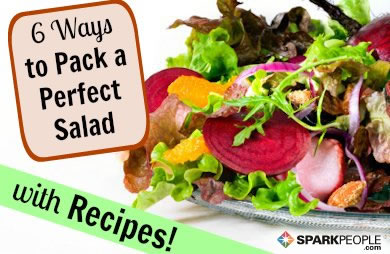Simon and Schuster author Ellen Sandback shared this guest blog post, an elegant and simple solution to killing bacteria in your home, from her book, Green Housekeeping .
Susan Sumner, a food scientist at Virginia Polytechnic Institute and State University in Blacksburg, contaminated fruits and vegetables with salmonella, shigella, or E. Coli bacteria, then sprayed the produce with hydrogen peroxide, vinegar, or both. Hydrogen peroxide was one hundred times as effective as vinegar, but vinegar and hydrogen peroxide worked together to kill ten times as many bacteria as were killed by peroxide alone.
This is a very elegant and simple solution to a vexing problem. The bacteria are not just moved around to cause trouble elsewhere; they are—to paraphrase from the movie The Wizard of Oz—not just merely dead, they are really, most sincerely, dead.
Implementing a Domestic Spray Program
I have been using this dual spray system for years, and frankly, it couldn’t be easier. Vinegar and hydrogen peroxide are natural substances that are produced by living organisms. Our own bodies produce hydrogen peroxide (H2O2) as a byproduct of metabolism. Hydrogen peroxide is essentially a water molecule with an extra oxygen atom attached. When hydrogen peroxide is exposed to heat, light, or organic material, it releases its extra oxygen; pure water and oxygen are produced by this reaction. Pure oxygen is extremely toxic to microorganisms, which is why hydrogen peroxide is such an effective antiseptic. It is rather gratifying to watch hydrogen peroxide bubbling and foaming as it kills bacteria; when the bubbling stops and cannot be restarted by the addition of more peroxide, the dead is done.
Vinegar and hydrogen peroxide are utterly harmless to humans, pets and the environment. The dual sprays don’t linger on surfaces, so rinsing is unnecessary, and microbes can’t acquire resistance to them.
Setting Up the System
- Buy two plastic spray bottles in two different colors. One bottle must be completely opaque, and as dark a color as you can find. (My bottle is black.) This dark opaque bottle is for the hydrogen peroxide, which degrades if it is exposed to light or heat.
Vinegar and hydrogen peroxide cannot be kept in the same bottle because hydrogen peroxide is delicate and readily breaks down into pure water.
- Buy a big bottle of consumer strength (3 percent) hydrogen peroxide at the drug store or grocery store. Fill your dark spray bottle with hydrogen peroxide and store it in a cool, dark place. (Do no attempt to use laboratory strength -- 30 percent -- hydrogen peroxide. It is a very strong oxidizer that starts fires.)
- Buy a gallon of distilled white vinegar at the grocery store.
Using the System
- Disinfecting raw foods:
PRODUCE
When you are washing fruits and vegetables, rinse off the dirt and grit, then spray them with vinegar and then with hydrogen peroxide. The peroxide, which has no taste, rinses the vinegar off the produce. No further rinsing is necessary.
MEAT
Spray red meat, fish, or poultry with vinegar, then with hydrogen peroxide. No rinsing is necessary.
- Disinfecting processed foods:
If you are really worried about germs, you can spray down your food packaging when you bring it home. (Waterproof packing only, please!) Dry the package with a clean, dry kitchen towel after you spray. This will work for milk cartons and bottles, yogurt containers, cheese, and processed meat packaging. Do not spray any type of cardboard. It is not waterproof and is also very dry, and hence probably sterile.
I do not spray all the food packaging I bring into the house because I believe in giving my immune system a chance to flex its muscles. But if I find that meat juice has leaked onto a yogurt container on the way home, I will certainly wash off the yogurt container and spray it with the dual sprays.
- After you clean meat, fish, or poultry, wash the sink with a dish cloth and dish liquid, then wring out the cloth before you throw it in the kitchen laundry basket. (I usually hang damp kitchen towels on the side of the kitchen laundry basket to dry.) Next, spray the sink with one bottle, then the other. Use the sprays on any handles and doorknobs you touched while your hands were full of meat juice. If you dislike the lingering smell of vinegar, spray vinegar first, then chase it with hydrogen peroxide.
- Use the sprays to disinfect the countertops, refrigerator, stovetop, or any other kitchen surface that worries you. There’s no need to rinse afterward.
Do not use these sprays on marble countertops. Vinegar dissolves marble, and hydrogen peroxide may damage it. Clean your marble countertops with dish soap and water. (Vinegar dissolves calcium-based stone, such as marble, limestone, dolomite, and calcite and may etch the surface of other natural stone.)
Get more tips on how to live a clean and healthy life in Sandbeck's Green Housekeeping.

About the Author
Ellen Sandbeck is an organic landscaper, worm wrangler, writer, and graphic artist who lives with (and experiments on) her husband and an assortment of younger creatures -- which includes two mostly grown children, a couple of dogs, a small flock of laying hens, and many thousands of composting worms -- in Duluth, Minnesota. She is the author of "Green Housekeeping" and "Green Barbarians."
Take a look inside the book "Green Housekeeping.”
Have you ever tried this approach to cleaning? Will you?
|
|















